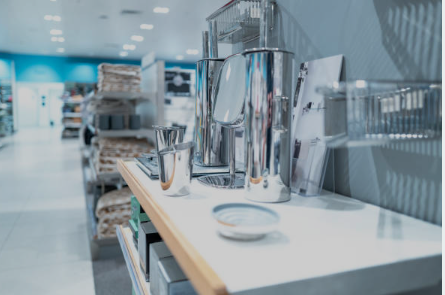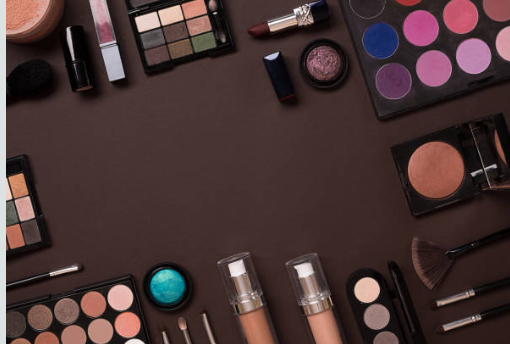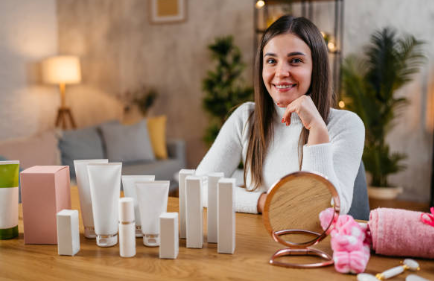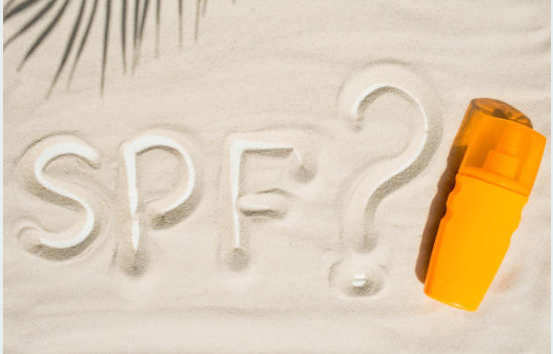
Uk Beauty Statistics, Facts and Trends
How big is the UK beauty market today? What do the latest statistics say about consumer behavior, spending, and ingredient preferences? Understanding these trends is key for brands, retailers, and consumers alike.
In this blog post, we have compiled a wide range of up-to-date statistics that highlight how UK beauty is changing.
From skincare and makeup to natural beauty alternatives and self-care trends, British consumers are making more conscious choices than ever before.
Whether you're curious about your natural skincare products uk, spending habits, the rise of clean beauty, or the influence of social media on beauty buying decisions, these numbers offer valuable insights into the industry's present and future.
Highlights
-
General Beauty Industry Statistics
-
UK Beauty Industry Statistics
-
Market Size of the UK Beauty Industry?
-
What Demographic Spends the Most on Beauty?
-
Cosmetic Industry Statistics
-
Makeup Industry Statistics
-
Skincare Industry Statistics
-
Global Leaders in the Beauty Industry by Country
-
UK vs USA: Beauty Industry Statistics
-
UK Cosmetics Market Trends
-
UK Cosmetics Market Analysis
-
Conclusion
-
References
GENERAL BEAUTY INDUSTRY STATISTICS
The following beauty industry figures give insight into the habits and preferences of UK consumers:
-
By 2027, the global cosmetics market is expected to be worth $463.5 billion.
-
In 2023, the beauty industry made over $500 billion worldwide, and it's predicted to grow to more than $650 billion by the end of 2025.
-
The anti-aging cosmetics market could reach $60.26 billion by 2026.
Products that help fight signs of aging especially those with vitamins C and E are expected to grow by about 5.8% each year. -
Skincare is the biggest part of the beauty industry, making up 40% of the total sales. Hair care comes next with 22%, and makeup (cosmetics) follows at 20%.
-
Subscription beauty boxes, which send products tailored to each person, are becoming more popular and are expected to grow by 12% each year.
-
Cosmetics with CBD are expected to grow by $2.22 billion by the end of 2024.
-
Beauty technology is the largest part of the market. However, the figure shown for it (US$92,233,720,368,547,760.00 in 2023) seems incorrect and likely a mistake.
-
Albania was listed as the top country for earnings in the Beauty & Personal Care market in 2023, but again, the number given appears to be inaccurate and may be an error.
-
In 2021, a survey showed that 84% of people in the UK named Dettol as their favorite health and beauty brand. Other popular brands included Oral-B, Colgate, and Boots.
-
In 2020, shampoo was the top-selling hair care product in the UK, earning £470.5 million. Hair dye products made £324.5 million, and conditioners made £315.8 million.
-
That same year, 73.9% of UK households bought Colgate products, 61.4% bought Nivea, and 57.6% bought Dove.
-
More than half of businesses in the UK hair and beauty industry made less than £99,000 a year in 2020.
-
Also in 2020, over 288,000 people worked in UK hairdressing, barbering, and beauty services.
-
45% of UK shoppers use at least one organic beauty product, and 64% choose products with packaging that can be recycled.
UK BEAUTY INDUSTRY STATISTICS
Here is some beauty industry analysis that proves how they've interacted with this industry:
-
By 2025, the value of the UK's natural and organic beauty market is expected to reach around £339 million, rising from approximately £221 million in 2020.
-
As of 2020, the overall value of the UK beauty industry stood at £27 billion, making it the seventh-largest cosmetics market globally. Within the UK, it ranks as the third-biggest industry sector.
-
According to data from the European Cosmetic, Toiletry, and Perfumery Association, the UK's beauty industry was valued at €9.8 billion in 2021.
-
During the third quarter of 2021, Vaseline ranked as the most widely used beauty brand among UK consumers.
-
When asked about beauty spending habits, 38% of UK residents reported not spending any money on beauty products or treatments. About 33% said they spend between £1 and £15 monthly (£12–£180 per year), while 3% spend £51–£100 per month, and only 1% spend more than £100 monthly.
-
The COVID-19 pandemic led to changes in shopping habits by 2020, 37.2% of consumers were purchasing their health and beauty items online.
-
The prestige beauty market took a 24% dip during the 2020 lockdown. However, sales bounced back with a 33% increase in the first quarter of 2021.
-
Social media has become a powerful marketing tool for beauty brands. Many now rely on influencers to boost visibility and drive growth.
-
Back in 2018, beauty-related content on YouTube had gathered a staggering 169 billion views.
-
One of the top beauty influencers on YouTube is Yuya, who has attracted over 24.8 million subscribers.
-
On Instagram, Kylie Cosmetics leads the way with over 25.5 million followers, followed by Anastasia Beverly Hills with 19.5 million, and Fenty Beauty with 10.9 million.
-
When it comes to Facebook, Bath & Body Works holds the top spot with over 10.37 million likes, followed by Risqué with 7.03 million, and Mary Kay Brasil with 6.08 million.
-
In 2019, women made up 94% of the beauty workforce in the UK. A year later, in 2020, 65% of those working in the industry were self-employed—a 57% increase from the year before.
-
Having a strong social media presence is now crucial for beauty brands. For instance, UK users spend an average of 53 minutes daily on Instagram alone.
-
Although still growing, the men’s beauty sector hasn’t yet reached full maturity. However, more brands are beginning to cater to male consumers, signaling major growth potential ahead.
MARKET SIZE OF THE UK BEAUTY INDUSTRY?
The UK’s health and beauty industry has shown steady growth over the years, despite facing challenges like the COVID-19 pandemic. Below are some key statistics that highlight recent trends and changes in the market:
-
In 2022, the UK health and beauty sector was valued at approximately £39.04 billion. Between 2022 and 2027, the market is expected to grow at an average annual rate of just over 2%.
-
The cosmetics industry in the UK experienced a significant boost in 2017, reaching a market value of £9.8 billion. However, the outbreak of COVID-19 led to a slight decline in both 2020 and 2021. Still, the UK remained one of the top consumers of cosmetics in Europe in 2021.
-
One of the hardest-hit areas was color cosmetics, which saw sales drop by around 25% in 2020 compared to the previous year.
WHAT DEMOGRAPHIC SPENDS THE MOST ON BEAUTY?
Consumer demand remains strong, with spending levels continuing to rise across various groups and regions.
-
Although the pandemic caused an 8% dip in the industry, the beauty market is on a strong recovery path and is expected to reach a value of $688.89 billion by 2028.
-
When it comes to spending by country, the United States leads the way, with annual beauty expenditures reaching around $89.7 billion. Millennial women are the biggest consumers, accounting for 38% of beauty product purchases.
-
Black women are a particularly influential consumer group in the beauty space, spending an estimated $7.5 billion each year. On average, they spend 80% more on makeup and twice as much on skincare compared to non-Black women.
COSMETICS INDUSTRY STATISTICS

The UK has one of the most influential and fast-growing cosmetics markets in the world. A key reason for this growth is the rise of younger generations entering the market.
Alongside this, social media, globalization, and the rise of online shopping have significantly changed how people buy beauty products. Here are some key figures about the UK cosmetics industry:
-
The UK’s organic cosmetics sector is expected to reach a value of £339 million by 2025.
-
In 2021, around 13% of UK adults either purchased or considered buying beauty advent calendars for Christmas.
-
Toiletries dominated the cosmetics market in 2020, holding nearly 30% of the total share. Among toiletries, toothpaste was the highest-earning product, bringing in about £538 million that year.
-
The value of eyeshadow products in the UK was estimated at over £351 million in 2020.
-
Imports and exports of cosmetics in the UK both declined in 2020, imports by 8% and exports by 7%.
-
Ireland was the largest importer of UK cosmetics in 2020, with trade valued at over £467 million.
-
Cosmetics rank as the third-largest market sector in the UK and the seventh-largest in the world.
-
Among British men, 79% reported regular use of personal care items like deodorants and shampoos. Popular brands included Lynx and Head & Shoulders.
-
The Beauty and Personal Care sector continues to grow rapidly, with skincare and cosmetics being the main drivers.
-
In 2020, sales in the UK’s toiletries and cosmetics market reached £8.7 billion, £580 million less than in 2019, mainly due to the effects of the pandemic.
MAKEUP INDUSTRY STATISTICS

Below are some key statistics that highlight makeup trends and usage across the UK:
-
According to Statista, L'Oréal is the most recognized cosmetics and makeup brand among UK consumers. As of 2024, 88% of online shoppers in the UK are familiar with the French beauty giant. Avon follows closely behind, with 84% brand awareness.
-
In 2020, Boots No7 was the most widely used makeup brand in the UK, with around 3.7 million users. Rimmel and Max Factor followed closely behind.
-
Around 13.2 million people in the UK used lipstick regularly in 2020.
-
That same year, 6.8 million women reported applying foundation or tinted moisturizer at least once a day.
-
Boots No7 was also the top brand for highlighters and blushes in 2020, purchased by about 2.1 million people.
-
Lip products from Boots No7, including lipsticks and lip glosses, were used by 3.8 million individuals in the UK—more than Rimmel and Maybelline.
-
About 3.7 million people chose Boots No7 for foundation, powder, and tinted moisturizers in 2020.
When it comes to why women wear makeup:
-
35% use it to enhance their natural features,
-
12% enjoy experimenting with different looks,
-
7% aim to achieve a bold or dramatic effect,
-
41% apply makeup to look less tired,
-
39% use it to cover blemishes,
-
25% want to appear more youthful,
-
and 22% of young women (ages 16–24) wear makeup to look good on camera.
-
In total, 83% of women in the UK wear makeup. The top three products they purchase are mascara (57%), lipstick (49%), and liquid or cream foundation (46%).
-
29% of women have tried trends like eyebrow shaping,
-
69% feel makeup trends take too much time,
-
72% believe the results often look unnatural.
-
Back in 2019, 18% of UK residents purchased makeup once a month, while 3% bought it weekly.
SKINCARE INDUSTRY STATISTICS

Skincare continues to be a major focus for British consumers, with increasing attention toward organic, luxury, and everyday skincare solutions. The following statistics offer a clear picture of how much the UK values skincare and how much consumers are willing to invest in it:
-
The organic skincare market is expected to grow steadily at an annual rate of 8.72% through 2027, reflecting rising demand for natural and eco-friendly products.
-
Global skincare sales are forecasted to hit $177 billion by 2025, showing just how significant this segment is within the broader beauty industry.
-
Within the UK, the skincare market is projected to reach a value of USD 24.37 billion by 2024.
-
In 2022, beauty brands spent approximately $7.7 billion on advertising, underlining the intense competition and importance of marketing in the skincare and cosmetics industry.
-
Back in 2020, the UK skincare market was worth around £2.17 billion, confirming its strong position in the national economy.
-
Skincare accounts for 23% of total revenue within the beauty industry, making it the second-largest category after personal care.
Spending by Age Group
-
In 2020, UK residents aged 75 and older spent an average of £8.20 per week on personal care items.
-
Consumers aged 50 to 64 had the highest average weekly spending, at around £15.40.
Top Skincare Categories in the UK (2020)
-
Non-medicated facial care was the most popular skincare category.
-
Luxury skincare and gift sets followed, generating over £537 million.
-
Body creams and lotions earned more than £200 million, while sunscreen sales reached nearly £167 million.
Key Players in the Market
-
Leading brands in the UK skincare space include Clarins, Unilever, L'Oréal S.A., and Procter & Gamble, each holding significant market shares.
Imports and Changing Demographics
-
In 2019, skincare products topped the list for cosmetics imports in the UK, with an estimated value of £1.81 billion.
-
Notably, 50% of male consumers are now actively purchasing skincare items, indicating a growing shift in the traditionally female-dominated market.
UK COSMETICS MARKET ANALYSIS
The COVID-19 pandemic disrupted both the demand and supply chains of cosmetics and beauty products in the UK. However, the market began to stabilize once government restrictions were lifted.
According to the Office for National Statistics, retail sales of pharmaceutical, medical, cosmetic, and bathroom-related items in Great Britain increased by 10.2% in 2022 compared to the previous year.
Post-pandemic, there was also a noticeable growth in the demand for hygiene-related products. Furthermore, the UK’s aging population has been contributing to a higher demand for anti-aging cosmetics. At the same time, the launch of innovative products featuring sustainable packaging is helping to drive further growth in the beauty and personal care market.
Conclusion
The UK beauty industry is a dynamic and diverse space, shaped by evolving consumer behavior, emerging technologies, and a strong demand for natural components. From the growth of online beauty retail to the increasing popularity of eco-conscious products, the data gives a vivid picture of where the market is headed.
References:


